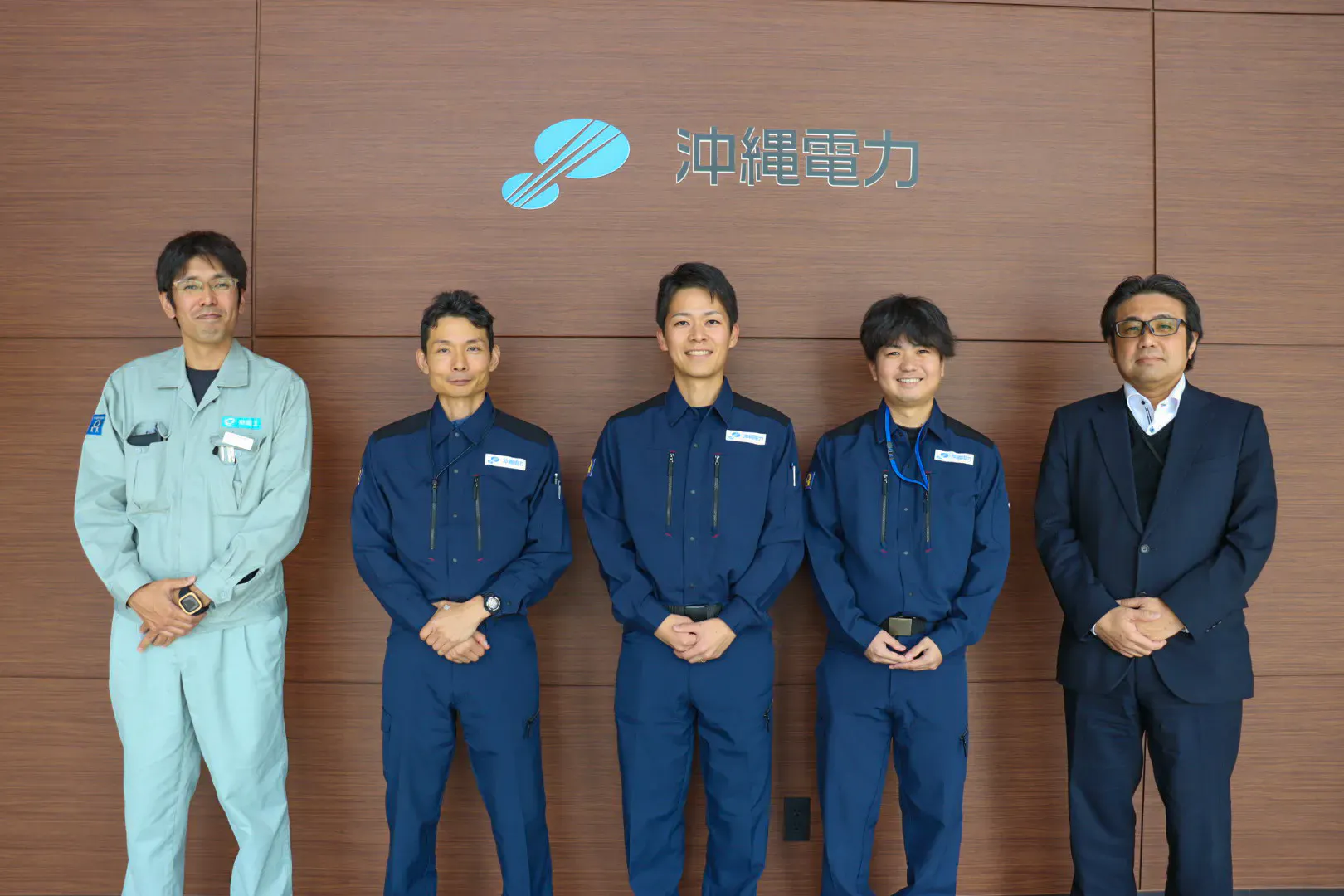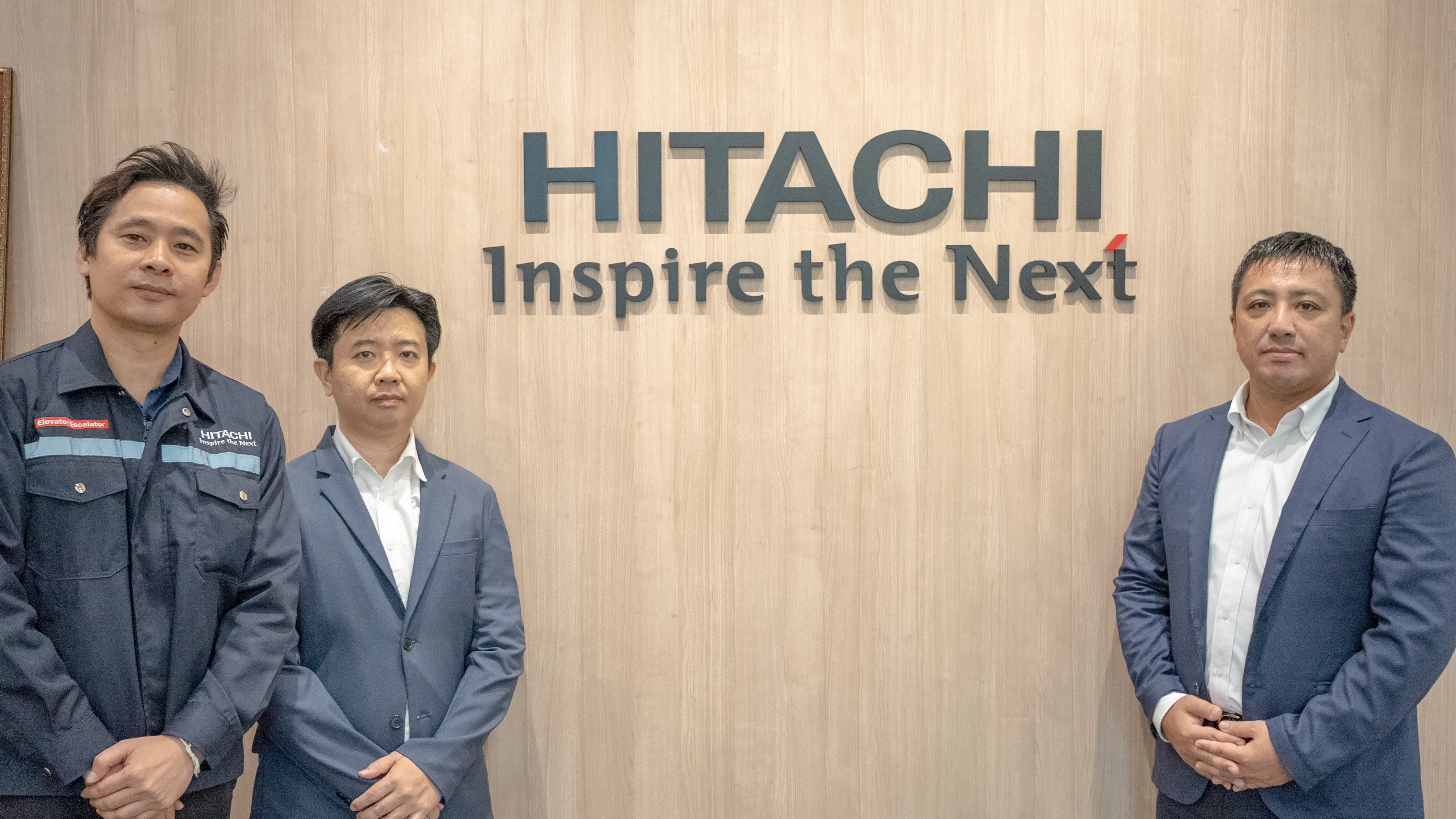Tsukuba City, Ibaraki Prefecture, Japan
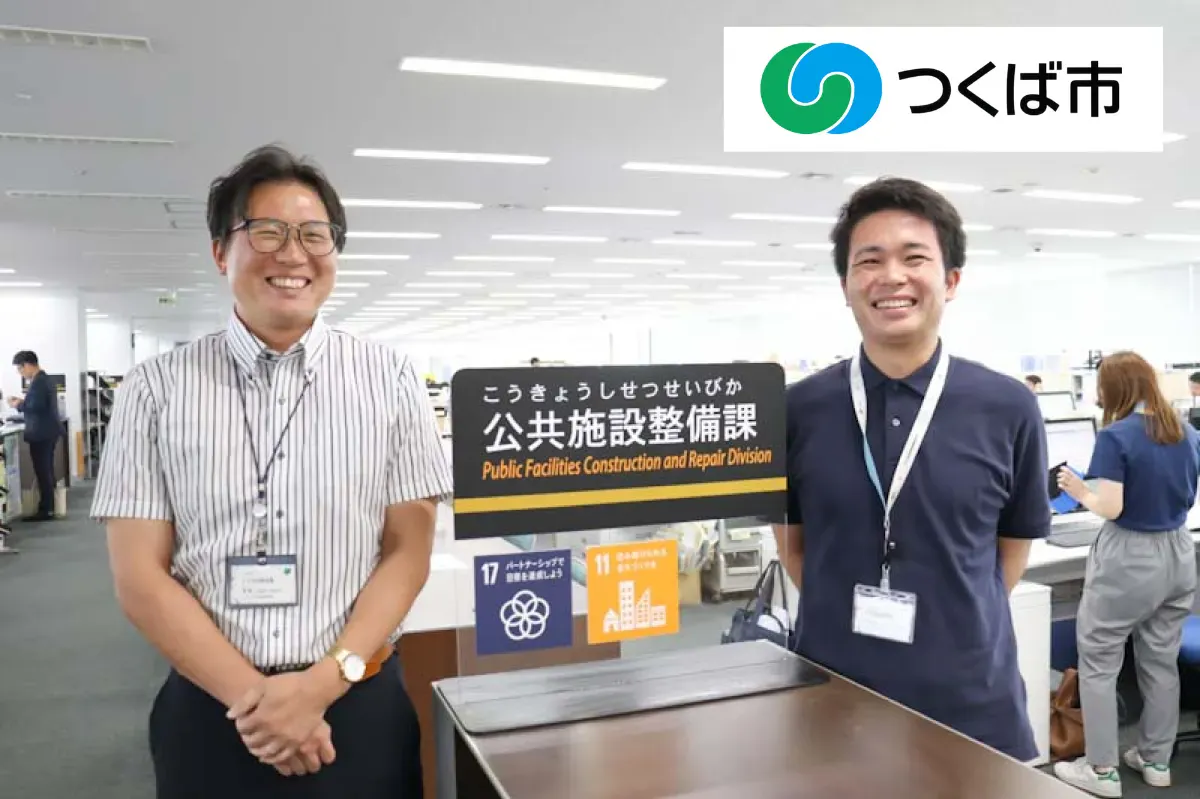

Company Name
Tsukuba City, Ibaraki Prefecture, Japan
Number of Employees
2,060
Business Activities
Government Institution
Utilization Services
With the majestic Mount Tsukuba and abundant natural surroundings, the city of Tsukuba also boasts of the identity of an academic and research hub. It has been designated as an International Conference Tourism City and a Super City National Strategic Special Zone. Reflecting its progressive character, the Tsukuba City Office has launched a pilot project to implement the DX(digital transformation) tool KANNA for project management as part of its efforts to improve operational efficiency.
In recent years, overtime for municipal employees has become a growing concern, highlighting that the need for efficiency isn’t limited to private companies. We spoke with Mr. Yoshihara and Mr. Tsubako from the Construction Department’s Public Facility Development Section, Building Unit 2, to understand the challenges that led Tsukuba City to utilize KANNA and the results they hope to achieve.
Background and Effects of KANNA Implementation
課題
1) Detailed work processes that weren’t clearly documented were left to the discretion of individual staff members, leading to reliance on specific individuals.
2) While regular departmental transfers occurred, the reliance on individuals hindered proper handover of tasks.
3) Due to limitations on sharing documents via email to prevent information leaks, it was necessary to gather stakeholders in person to agree on updated plans. Additionally, there were often discrepancies in the understanding of the latest information when communicating via email.
導入の決め手
To centralize information within the department, eliminate reliance on specific individuals, and establish a workflow that accommodates regular departmental transfers.
効果・改善
1) The project calendar makes construction progress visible, and the project board organizes stakeholders and key points for each project. This transparency, accessible to all stakeholders, helps eliminate reliance on specific individuals.
2) The use of progress charts to visualize construction flow and tasks has clarified workflows. This has led to the creation of a manual, allowing smooth sharing of processes during handovers.
3) In the event of a disaster, KANNA enables quick response via smartphones, facilitating the sharing and understanding of on-site conditions.
Person interviewed

Mr. Yoshihara, Section Chief
Mr. Tsubako, Senior Engineer
Population Growth Rate Ranked No. 1 in Japan, Yet Insufficient Staff to Keep Up with the Rapidly Increasing Population
— First, could you tell us about Tsukuba City? Located in the southwestern part of Ibaraki Prefecture, Japan, it’s known as an academic and research city, but what kind of region is it?
Mr. Yoshihara: Tsukuba City was ranked No. 1 in Japan for population growth, with an increase of 2.3% as of January 1, 2024, according to the Ministry of Internal Affairs and Communications' "Resident Registration Population and Household Survey." The number of children is also growing, and in April of this year, we opened new elementary and junior high schools.
The major turning point for Tsukuba City’s population growth was the opening of the Tsukuba Express in 2005. The travel time from Tsukuba Station to Akihabara Station (Tokyo) is just 45 minutes at its fastest. Along with this convenience, the diversification of work styles since the COVID-19 pandemic has also played a role in this trend.

The cityscape from Tsukuba Station
Many residents in Tsukuba City now work remotely from home and only commute to their companies in central Tokyo when necessary. This new work style seems to align well with Tsukuba's environment. While offering convenient transportation options, Tsukuba is also rich in nature, making it an ideal place for raising children, with strong support systems for families. Tsukuba promotes a balance of urban convenience and rural tranquility, which it calls "Tokainaka" (a blend of city and countryside in Japanese).
However, despite the rapid population growth, the city faces a shortage of staff to adequately serve the increasing number of residents. To address this issue, the city office has been adopting various DX tools to improve the efficiency of its staff's operations.
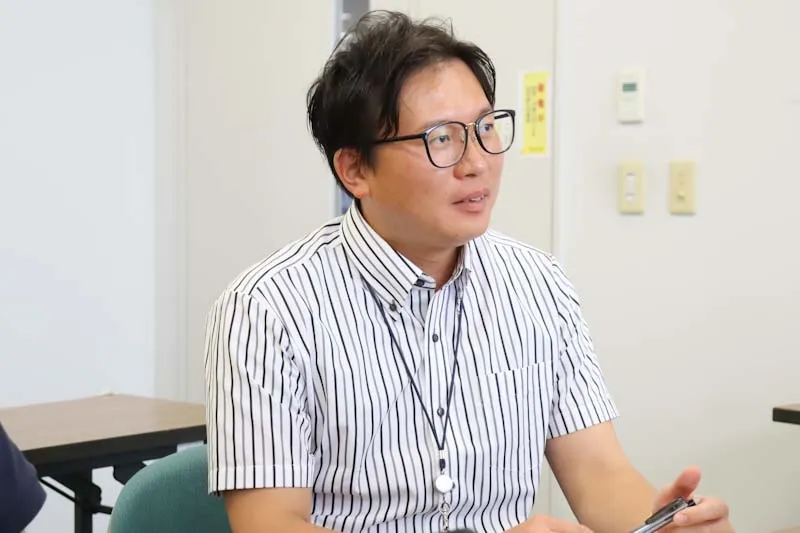
Tsukuba City is highly proactive in digitizing its operations, having previously implemented RPA (Robotic Process Automation) and AI meeting minutes systems to improve efficiency. As part of its ongoing efforts to streamline work, the city has also launched a pilot project for "KANNA," starting with the Public Facility Development Section, where we are based.
Creating Manuals for Smooth Task Handovers in Response to Regular Department Transfers
— Could you explain the specific challenges you’re facing?
Mr. Yoshihara: The Public Facility Development Section, where this pilot project is taking place, is responsible for ordering repairs and construction of public facilities, such as schools and community centers throughout the city. We also assist in managing construction schedules, supervising projects, and conducting final inspections.
In Tsukuba City, like in other municipalities, we as public employees, carry out our duties based on legal frameworks. However, detailed work processes are not explicitly defined, leaving those aspects up to individual discretion. While each staff member strives to perform tasks accurately and efficiently, this can lead to a reliance on specific individuals.
This reliance stems from the unique nature of administrative organizations. Information security is paramount, and data breaches are absolutely unacceptable. The computers assigned to each staff member are equipped with high-level security, and there are strict limitations on taking them out of the office. File sizes for email attachments are restricted, and we are only allowed to use the online storage approved by the city.
Mr. Tsubako: While high security is essential to protect sensitive information related to residents and public administration, it also presents challenges. Our Public Facility Development Section collaborates not only with other departments within the city but also with external private contractors. When building or repairing public facilities like schools, our role is to assist with everything from assessing and coordinating the project to ordering, overseeing construction, and conducting final inspections—all while working closely with professionals who have specialized knowledge in construction.
To proceed with facility construction, we need to share blueprints with all relevant parties. However, blueprints are detailed and often large in size. Even when converted to PDF, the file size is too big to send via email. As a result, we end up handling physical copies of the blueprints. While this is manageable within the city hall, when changes occur, we have to gather all stakeholders to agree on the modifications, which can be time-consuming and inefficient.

Mr. Yoshihara: Having to bring physical blueprints and gather stakeholders for meetings, often visiting contractors' offices, is very inefficient. While email can be used for communications or updates that don't involve large file attachments, many people are involved in each construction project, including department and section managers who oversee the facilities, designers, and contractors. Ensuring that all parties receive the information without any omissions is challenging.
Previously, we would use CCs to send emails to all stakeholders, but there were instances where the recipients would miss important details. It’s difficult for us to track which stakeholders may have missed certain information, and when that happens, discrepancies in understanding arise. These gaps in communication can ultimately lead to delays in the project timeline.
In the Tsukuba City Office, rather than each employee having their own email address, one shared email address is assigned to each department. So, Mr. Tsubako and I use the same email address, and we don’t have individual addresses. While this can be beneficial for information sharing, it also means that until you open the email, you don’t know whether the information is relevant to you or not, resulting in unnecessary time being spent.
Additionally, with departmental transfers occurring approximately every four years, there are frequent opportunities for handovers. However, the reliance on individual expertise (or "siloed" knowledge) becomes a bottleneck in ensuring smooth transitions.
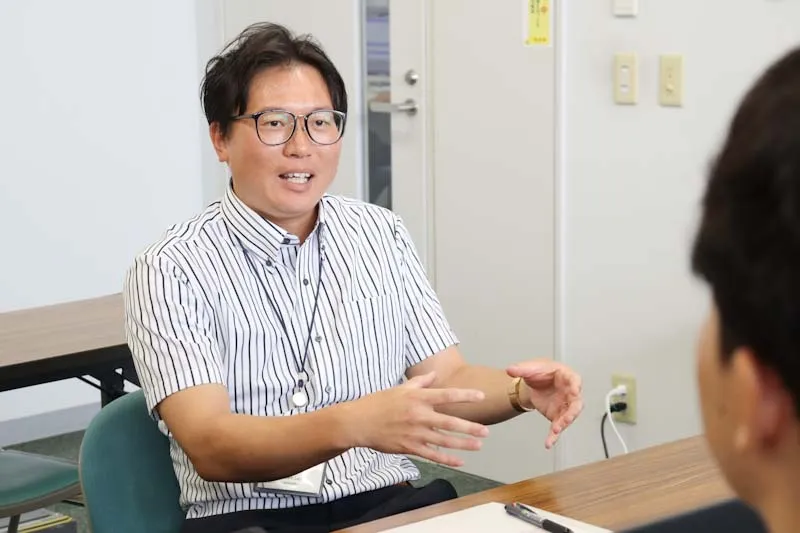
As I mentioned earlier, work processes that aren’t clearly documented are left to the discretion of individual employees. This means we haven’t yet established a system where someone can easily understand the workflow and access prior information just by looking at it. Both the employees handing over tasks and those receiving them face considerable challenges.
Furthermore, each department only has a short handover period, and in the rush, employees quickly move on to their next assignment. Improving this situation and establishing an efficient and accurate handover system is an urgent task.
Utilizing Gantt Chart for Task Management
— With the challenges of relying on specific individuals, difficulties in handovers, and the broad scope of information sharing among stakeholders, what results do you expect from KANNA?
Mr. Yoshihara: The first thing we aim to address is eliminating the reliance on individual staff members, which has been a significant issue for us. We hope to resolve this by utilizing KANNA’s Gantt Chart feature. Even for a single construction project, there are many processes involved. KANNA allows us to customize each process item with any name, and it visualizes which steps are scheduled to start and end at specific times, including the dependencies between tasks. Our plan is to incorporate all tasks related to construction into KANNA’s Gantt Chart for better visibility and management.
Additionally, if we create templates for the construction tasks we’ve entered into the Gantt Chart then when a new project arises, all we need to do is apply the template and fill in the new site name and construction schedule. This will significantly shorten our workload, and the order of tasks and what needs to be done will be fully documented, leaving a clear trail of information. By using these templates, even when there’s a change in personnel, anyone will be able to replicate the same operations as before, ensuring continuity in our processes.

Tsukuba City has been using the Gantt Chart which has been templated to increase its versatility.
The project board is also very convenient. For instance, the department in charge changes depending on the facility—like the Education Facilities Division for schools or the Citizens Division for community centers—and each has its own specific considerations. With KANNA, detailed information and important notes can be organized by project, and by simply looking at the project board, all stakeholders can track the progress of each task, such as "Before Work," "In Progress," and "Completed." This feature is exactly what we needed for supervising and managing multiple construction projects.
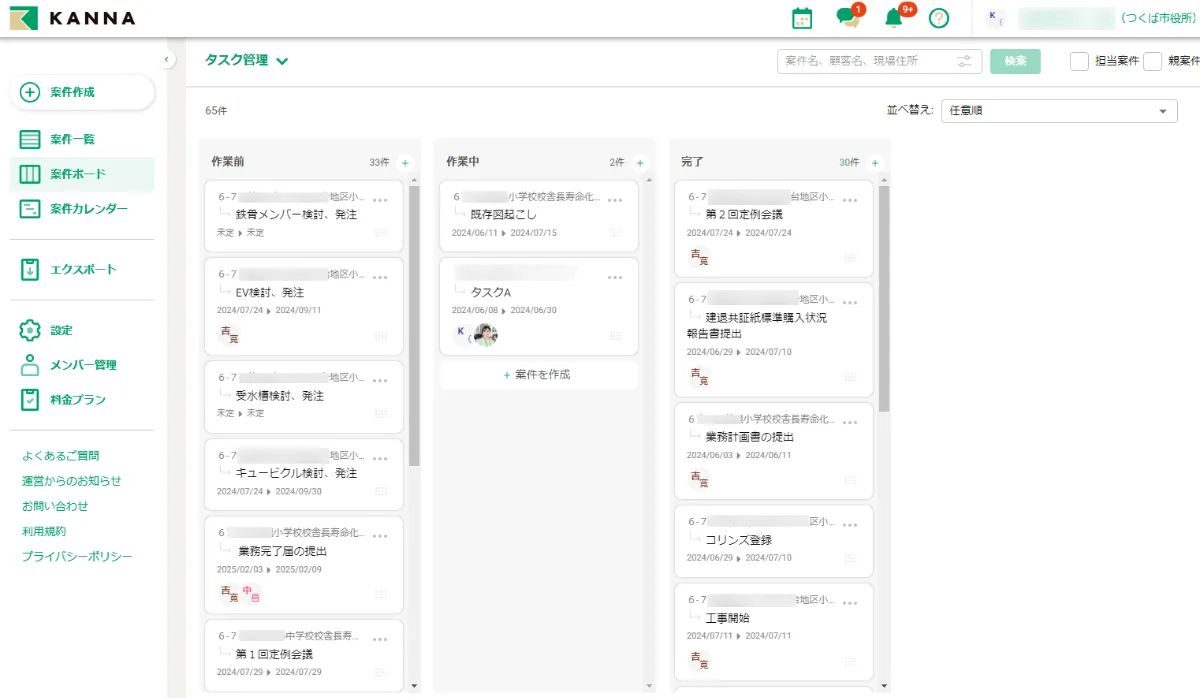
The project board screen that Tsukuba City uses in KANNA
This feature also plays a role in facilitating smooth ordering of materials and equipment. With the city's growing population, the expansion of school facilities has become a pressing issue. In fact, a new elementary and junior high school opened in April of this year. Installing air conditioning is essential, and for that, a cubicle transformer is needed. However, due to labor shortages at the manufacturing plants, it can take about 3 to 4 months for delivery.
If this information is integrated into the Gantt Chart template, the ordering schedule for the cubicle transformers becomes clear, ensuring that construction can proceed according to the correct timeline. Moreover, in today’s rapidly changing social environment, delivery times may suddenly shift. With KANNA, these changes can be quickly shared with all relevant parties, allowing for prompt adjustments to the schedule.
As I mentioned earlier, KANNA’s Gantt Chart is also very useful during handovers. For someone like Mr. Tsubako or myself, who are in architectural roles, handing over tasks is already a challenge, but for general staff without specialized knowledge in construction, it’s even harder. With KANNA’s Gantt Chart, they can visually understand how the construction progresses, and by using templates, the tasks become more systematized.
Additionally, if all communications with stakeholders, including sharing documents such as blueprints, are fully transitioned to KANNA, then chat records will show the interactions under individual names instead of company or department names. Any necessary documents for the construction can be easily accessed from each project’s folder. Even if there’s a personnel transfer in the middle of a project, the oversight and supervisory work can be handed over smoothly.
Another helpful feature in KANNA is the ability to check who has read messages in the chat. You can see which members have read a posted comment, so it’s clear who has seen the message and who hasn’t. Even if someone doesn’t respond, just being able to confirm this allows us to stay on top of the situation, making it a very convenient feature.
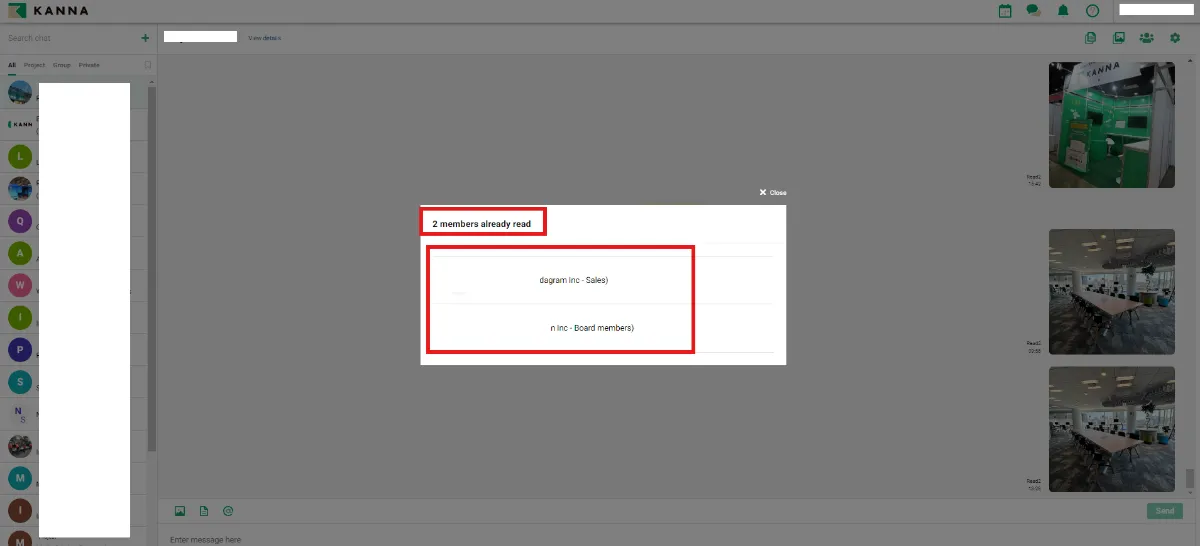
KANNA's chat function allows you to see a list of members who have read the message, making it easy to track who has acknowledged the information.
Communication often stops at the contractors' managers, and the information doesn't always reach the workers on-site, placing a burden on the craftsmen.
Mr. Tsubako: As we transition communication methods and document sharing to KANNA, we’ve been working on providing accounts not only to stakeholders within other departments but also to private contractors. We've already received positive feedback. Whether it's through email or phone, most of our interactions are with the contractors’ managers. However, the actual work is carried out by the craftsmen working under them.

There have often been cases where the information we shared with the managers didn’t fully reach the craftsmen working on-site, causing difficulties for the workers. However, by moving communication to KANNA’s chat, both the managers and the craftsmen who are on-site can view the messages we send, ensuring that all relevant parties have access to the same information.
This helps everyone understand the necessary details in advance, which can prevent errors during the construction process—a clear benefit for us as project managers. Additionally, the fact that KANNA is a high-security app allows us to provide accounts to everyone involved, including the on-site craftsmen. The trust in KANNA’s security is what makes it possible to include all stakeholders in the system.
Mr. Yoshihara: By switching to KANNA’s chat function, the craftsmen can communicate more efficiently, similar to how they use the popular green chat app in their daily lives. Writing emails can be time-consuming, starting with formal greetings like “Thank you for your continued support,” which takes up unnecessary time. However, with chat, it doesn’t feel rude to skip the formalities and get straight to the point. In fact, it can even make interactions feel a bit more casual and approachable. This allows us to communicate more directly, which benefits both contractors and managers. Additionally, the fact that KANNA is an app designed for smartphones, not just computers, is a critical point that makes it easy for craftsmen to use.
Furthermore, using KANNA’s folder function to share blueprints helps prevent misunderstandings. As I mentioned earlier, the computers assigned to us have limitations on sending large files via email, so for data-heavy documents like blueprints, we used to rely on physical copies. By transitioning this process to KANNA, we can streamline communication and document sharing, eliminating the need for paper-based exchanges.
With KANNA, all blueprints and image documents related to a construction project can simply be stored in the folders created for each project. Every time a new file is uploaded, a push notification is sent to all relevant parties, ensuring that no one misses any updates. This eliminates the worry of overlooking important information.
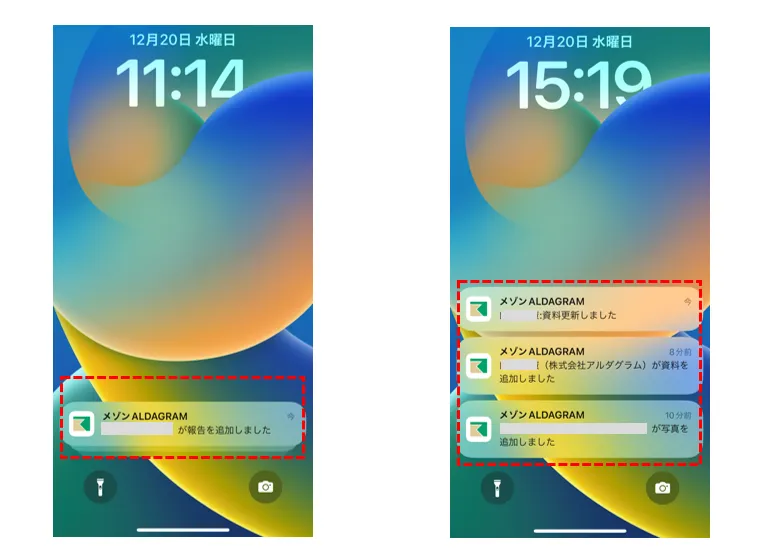
The push notification feature in KANNA
I expect that KANNA's folder function could help shorten the duration of regular meetings while also improving their accuracy. Currently, our regular meetings are held on-site, with all contractors present. We have to bring large amounts of paper documents, including blueprints and legal materials based on the Building Standards Act.
At these meetings, we discuss the progress of the work while presenting these materials. However, from the contractors’ perspective, being presented with legal documents on the spot doesn’t guarantee they can immediately understand everything. Moving forward, we plan to upload relevant materials into KANNA’s folders ahead of the meetings, based on the agenda. This way, contractors can review the documents in advance, deepening their understanding and resolving any questions during the meeting. By enhancing the accuracy of the discussions, we also aim to reduce the frequency of these meetings when sharing via KANNA is sufficient. This would not only cut down on meeting time but also reduce the time spent traveling to the site.

Enhancing Efficiency While Considering the Use of KANNA for Emergency Disaster Response
— In addition to solving these challenges, disaster response is another important part of the work of municipal employees who support the lives of citizens. Could you share what expectations you have for KANNA in handling emergency situations?
Mr. Yoshihara: When major disasters like earthquakes or heavy rainfall occur, transportation networks can be paralyzed. In Tsukuba City, we have already implemented a municipality-specific app that allows employees to communicate without needing to gather at city hall. However, the drawback of this app is that it’s primarily focused on chat and lacks a folder function like KANNA. As a result, when staff or emergency responders post one message after another, essential information or photos tend to get buried in the flow.
In a disaster, the first priority is to accurately assess the situation on the ground, and for that, photos from the site are essential. While the current municipality-specific app we use does allow for image sharing, and it helps us track information chronologically, it doesn’t offer a way to organize or sort the information and damage photos.
By utilizing KANNA’s folder function, we could create folders by location or date, and upload site photos accordingly. Each folder could be labeled not just with a place name, but also numbered and linked to a map, enhancing the visibility and accessibility of the information. This would make it much easier to locate specific images and information, greatly improving the efficiency of disaster response efforts.

Image of the folder organization for photos in KANNA
Furthermore, disaster recovery often requires collaboration with other municipalities. For example, during the Noto Peninsula earthquake that occurred on January 1, 2024 in Japan, Tsukuba City’s Crisis Management Division dispatched support personnel. However, for the dispatched staff, the disaster area was unfamiliar territory. If we could organize the information from the affected areas using KANNA, allowing personnel to view site photos linked with maps, even in unfamiliar locations, it would be a tremendous help. This would enable quicker responses in areas without local knowledge.
— Thank you. Lastly, after conducting the pilot project with KANNA, could you share Tsukuba City’s vision for its future operational structure and what you aim to achieve moving forward?
Mr. Yoshihara: Using DX tools like KANNA is essential for improving operational efficiency. Recently, the issue of overtime for municipal employees has come into focus, and much of that overtime results from unexpected problems. One solution to this is the standardization of information.
When information is shared and stored in fragmented ways—through emails, phone calls, or individual notes—it becomes difficult to get a unified understanding, and the data isn’t properly accumulated. However, as I mentioned earlier, if all work-related information can be centralized in KANNA, everyone involved can access the same information in real time without missing anything. The data will also be preserved, allowing us to look back at past events and maintain a record of evidence. This will not only enable quicker responses to sudden issues but also help prevent them in the first place.
In this pilot project, we are implementing KANNA within the Public Facility Development Section where we work. If the introduction of KANNA proves successful in improving operational efficiency, we believe it will be considered for deployment in other departments and sections. Since municipal work requires collaboration across departments, this pilot project with KANNA serves as a critical test.
Additionally, the resources for municipal operations come from citizens' taxes. To reduce costs and be more environmentally conscious, we need to fully embrace going paperless in the future. Achieving this will require expanding hardware, such as tablets, so it's not a simple task. However, by using KANNA and tablets, we can check documents anytime and anywhere without needing to print them out.
As DX advances in municipal operations, we expect more tasks will be handled by AI rather than staff. However, projects like the development and expansion of public facilities will always require human involvement. By smartly utilizing digital tools, we aim to ensure that staff have enough time to focus on tasks that require direct attention. This will help ensure that Tsukuba City remains a place where people want to live and continue living.
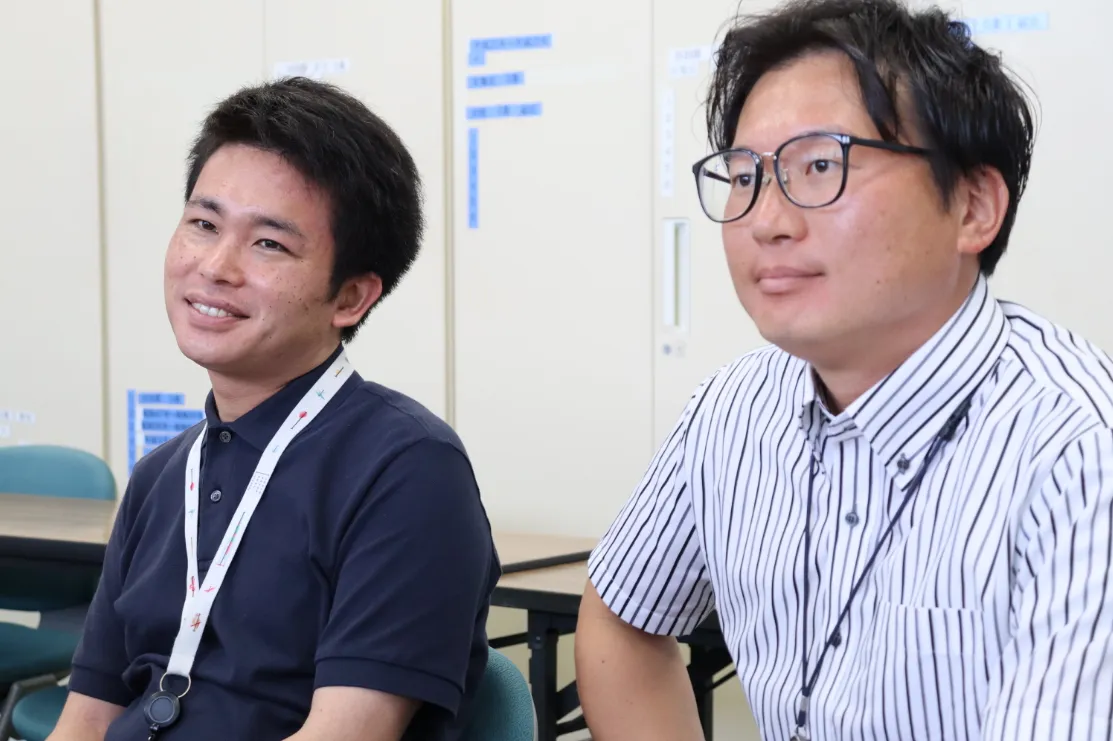
Company Name: Tsukuba City, Ibaraki Prefecture, Japan
Business Description: Government Institution
Website: https://www.city.tsukuba.lg.jp/index.html
Article published on: August 21, 2025
